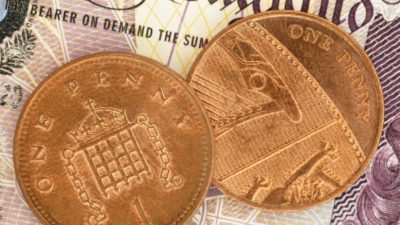GlaxoSmithKline (LSE: GSK) has long been a favourite among income-seeking investors, but the expiry of a number of key patents, including blockbuster asthma treatment Advair, had left it starved for cash and unable to cover both capex and dividends in 2015.
This, the potentially disruptive Novartis deal and the appointment of a new CEO with little experience managing pharma pipelines, has led the share price down. But none of that should stop you buying GlaxoSmithKline’s 5.4% yield.
A business transformed
GlaxoSmithKline is on track to report a 30% spike in earnings this year, although these figures are flattered by the weaker pound and it’s unwise to believe exchange rates will remain favourable in the long term.
I believe Q3 14% core operating growth at constant currency to be a more important figure, because it shows the company is delivering on its earnings promises post the 2015 Novartis deal.
While this double-digit earnings jump is attractive for a company trading on a forward PE of only 14, the most important aspect is that it has increased the reliability of GlaxoSmithKline’s earnings and cash-flows. Why?
Firstly, Glaxo swapped its oncology division for Novartis’ vaccine division. Oncology demands high levels of research and development with no guarantee of a payout, which is exactly what led to Glaxo’s last patent cliff. Once you’ve created a vaccine however, you can expect steady sales. Most parents will get their kids vaccinated as per doctor’s orders, after all. Novartis lacked scale in vaccinations, whereas Glaxo now commands around 27% of the market. This scale has enabled them to increase profits of the newly-acquired treatments.
The two companies then combined their consumer goods departments in a joint venture, second in size only to Johnson & Johnson, again granting significant synergies. This product category fuels some of the world’s best dividends because of the high-volume, low-ticket, predictable sales of well-established brands like Voltarol and Sensodyne, both of which are owned by GSK.
While this deal has likely improved the stability of Glaxo’s earnings and cash flows, its main business is still Global Pharmaceuticals. The company seems to have a bright future in this area with an impressive pipeline of drugs awaiting approval, including the rapid growth prospects in its HIV department. The category also increased sales by a solid 6% in the third quarter.
Cash flow improvements and a new broom
That’s a lot to digest, but Glaxo’s cash flow metrics may better explain the impact of the Novartis deal. In 2015, it generated only £2.56bn in operating cash flow, down from £5.18bn the prior year. Understandably, the city questioned the sustainability of the £3.87bn dividend payout if business didn’t pick up.
But over the last 12 months, Glaxo has generated nearly double last year’s operational cash flow, at £5bn. This just about covers the dividend and capex and I believe Glaxo is only just beginning to reap the benefits of the Novartis deal.
Some have voiced doubts over Sir Andrew Witty’s successor Emma Walmsley, largely because her expertise lies in the consumer goods sphere, not in building pharmaceutical pipelines.
I don’t see this appointment as a negative at all. Walmsley has worked at Glaxo for a number of years and already possesses an understanding of the business. Her experience with consumer goods means she likely values its consistent cash flows and, although this is speculation, it’s possible she could continue improving the predictability of cash flows at the company, therefore securing the dividend.







